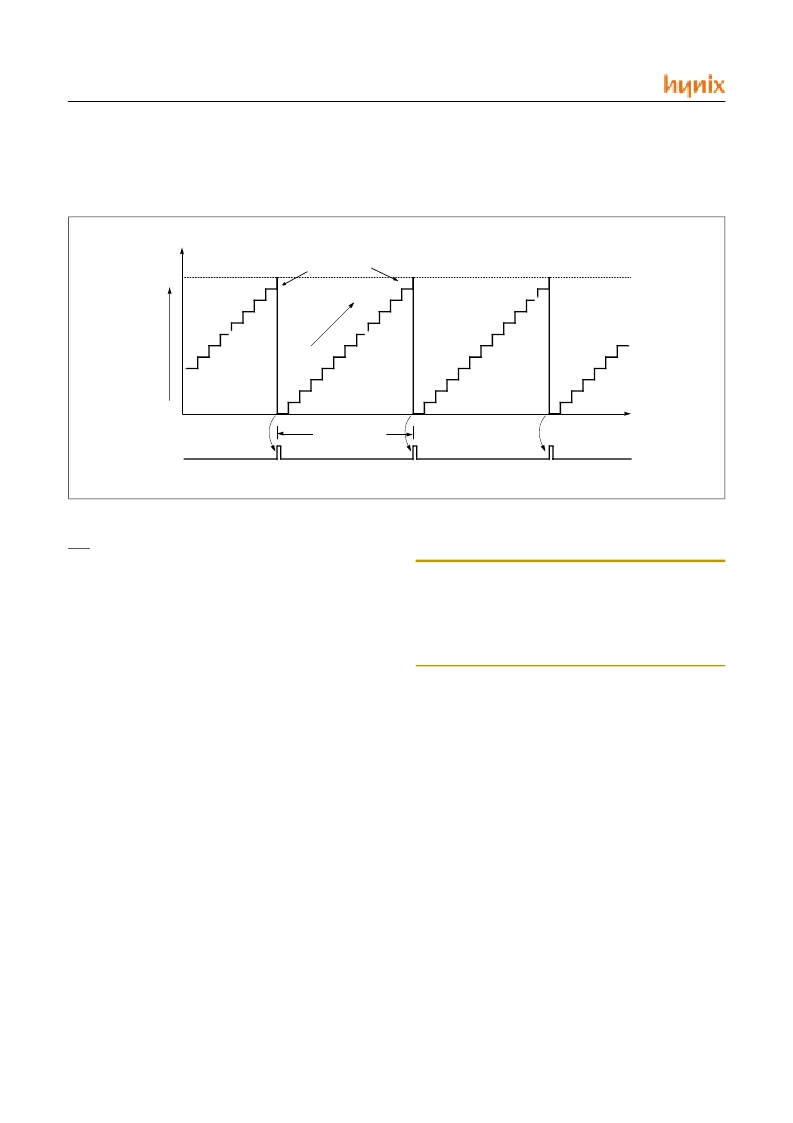- 您現在的位置:買賣IC網 > PDF目錄385388 > HMS81008E (Hynix Semiconductor Inc.) HYNIX SEMICONDUCTOR 8-BIT SINGLE-CHIP MICROCONTROLLERS PDF資料下載
參數資料
| 型號: | HMS81008E |
| 廠商: | Hynix Semiconductor Inc. |
| 元件分類: | 8位微控制器 |
| 英文描述: | HYNIX SEMICONDUCTOR 8-BIT SINGLE-CHIP MICROCONTROLLERS |
| 中文描述: | Hynix半導體公司的8位單芯片微控制器 |
| 文件頁數: | 47/77頁 |
| 文件大小: | 1112K |
| 代理商: | HMS81008E |
第1頁第2頁第3頁第4頁第5頁第6頁第7頁第8頁第9頁第10頁第11頁第12頁第13頁第14頁第15頁第16頁第17頁第18頁第19頁第20頁第21頁第22頁第23頁第24頁第25頁第26頁第27頁第28頁第29頁第30頁第31頁第32頁第33頁第34頁第35頁第36頁第37頁第38頁第39頁第40頁第41頁第42頁第43頁第44頁第45頁第46頁當前第47頁第48頁第49頁第50頁第51頁第52頁第53頁第54頁第55頁第56頁第57頁第58頁第59頁第60頁第61頁第62頁第63頁第64頁第65頁第66頁第67頁第68頁第69頁第70頁第71頁第72頁第73頁第74頁第75頁第76頁第77頁

HMS81004E/08E/16E/24E/32E
44
JUNE 2001 Ver 1.00
2) Timer0, Timer1
TIMER0 and TIMER1 have an up-counter. When value of
the up-counter reaches the content of Timer Data Register
(TDR), the up-counter is cleared to “00h”, and interrupt
(IFT0, IFT1) is occured at the next clock.
For Timer0, the internal clock (PS) and the external clock
(EC) can be selected as counter clock. But Timer1 and
Timer2 use only internal clock. As internal clock. Timer0
can be used as internal-timer which period is determined
by Timer Data Register (TDR). Chosen as external
clock, Timer0 executes as event-counter. The counter ex-
ecution of Timer0 and Timer1 is controlled by T0CN,
T0ST, CAP0, T1CN, T1ST, of Timer Mode Register TM0
and TM1. T0CN, T1CN are used to stop and start Timer0
and Timer1 without clearing the counter. T0ST, T1ST is
used to clear the counter. For clearing and starting the
counter, T0ST or T1ST should be temporarily set to “0”
and then set to “1”. T0CN, T1CN, T0ST and T1ST should
be set “1”, when Timer counting-up. Controlling of
CAP0 enables Timer0 as input capture. By programming
of CAP0 to “1”, the period of signal from INT2 can be
measured and then, event counter value for INT2 can be
read. During counting-up, value of counter can be read-
Timer execution is stopped by the reset signal(RE-
SET=”L”)
Note:
In the process of reading 16-bit Timer Data, first
read the upper 8-bit data. Then read the lower 8-bit data,
and read the upper 8-bit data again. If the earlier read up-
per 8-bit data are matched with the later read upper 8-bit
data, read 16-bit data are correct. If not, caution should be
taken in the selection of upper 8-bit data.
(Example)
1) Upper 8-bit Read 0A 0A
2) Lower 8-bit Read FF 01
3) Upper 8-bit Read 0B 0B
=====================
0AFF 0B01
Figure 13-5 Operation of Timer0
~
Timer 0 (IFT0)
Interrupt
T0 Data
Register
Value
TIME
Occur interrupt
Occur interrupt
Occur interrupt
Interrupt period
upcoun
~
~
0
1
2
3
4
5
6
MATCH
(TDR = T0)
0
T0 Value
相關PDF資料 |
PDF描述 |
|---|---|
| HMS81016E | HYNIX SEMICONDUCTOR 8-BIT SINGLE-CHIP MICROCONTROLLERS |
| HMS81024E | HYNIX SEMICONDUCTOR 8-BIT SINGLE-CHIP MICROCONTROLLERS |
| HMS81032E | HYNIX SEMICONDUCTOR 8-BIT SINGLE-CHIP MICROCONTROLLERS |
| HMS81C43XX | CMOS SINGLE-CHIP 8-BIT MICROCONTROLLER FOR TELEVISION |
| HMS87C1304A | CMOS SINGLE-CHIP 8-BIT MICROCONTROLLER |
相關代理商/技術參數 |
參數描述 |
|---|---|
| HMS81016 | 制造商:未知廠家 制造商全稱:未知廠家 功能描述:REMOTE CONTROLLER |
| HMS81016E | 制造商:HYNIX 制造商全稱:Hynix Semiconductor 功能描述:HYNIX SEMICONDUCTOR 8-BIT SINGLE-CHIP MICROCONTROLLERS |
| HMS81020ET | 制造商:未知廠家 制造商全稱:未知廠家 功能描述:REMOTE CONTROLLER |
| HMS81020TL | 制造商:HYNIX 制造商全稱:Hynix Semiconductor 功能描述:HYNIX SEMICONDUCTOR 8-BIT SINGLE-CHIP MICROCONTROLLERS |
| HMS81024 | 制造商:未知廠家 制造商全稱:未知廠家 功能描述:REMOTE CONTROLLER |
發(fā)布緊急采購,3分鐘左右您將得到回復。